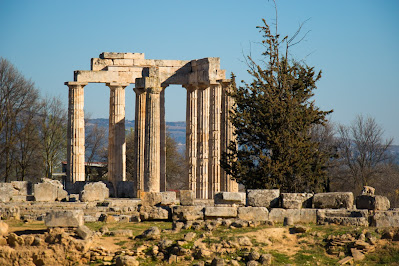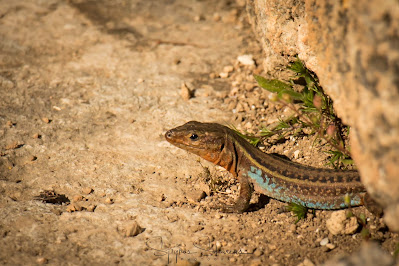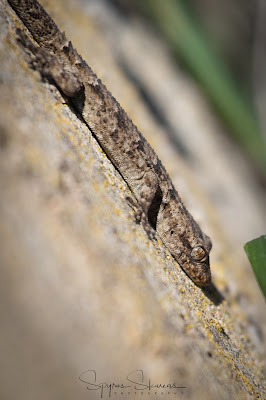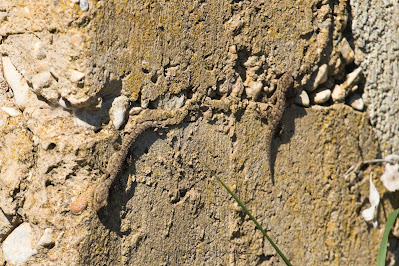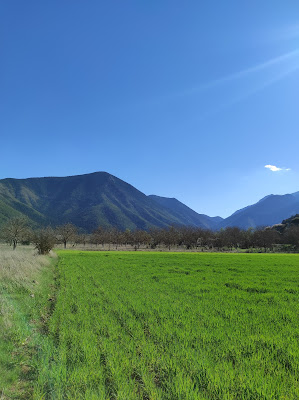Peloponesse Wildlife & History tour: March 26th 2023
Spring is ideal for combining "herping" (searching reptiles and amphibians) with history and archeology. Eastern Peloponnese proved to be the best destination for both!
Justin and his family live in San Diago California, and booked a 10 day trip in Greece, based in Athens. Their main interest observing reptiles and amphibians, while they were also interested in ancient greek history. So on March 26th we travelled to Eastern Peloponnese, and more specifically to Nemea and Lake Stymfalia. We had a blast with lot of lizard and amphibian success, although snakes proved to be highly cryptic.
Temple of Zeus, Nemea Peloponnese
A stunning mastepiece of Ancient Greek architecture
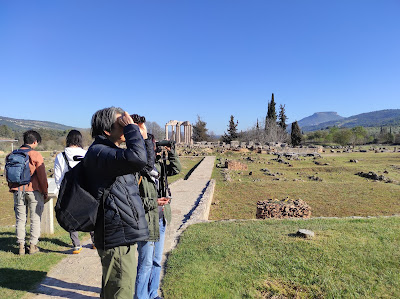
Watching a Middle Spotted Woodpecker
around the Temple of Zeus, Nemea
After making a stop over at Isthmos of Corinth (Corinth Canal), we headed south to Nemea. There we entered one of the most impressive temples of ancient greek history, the Temple of Zeus. We could easily find the first Goldfinches and Greenfinches, perching on the nearby tall Cypresses. Suddenly, a Middle Spotted Woodpecker landed on an Almond tree, what a beauty!
Getting closer to the temple itself, the sun rays were already hitting the marbles,while the first lizards started to appear. Firstly a big Balkan Green Lizard (Lacerta trilineata) that was so fast we hardly saw it. Soon several Eastern Peloponnese Lizards (Podarcis thais) were playing around, both male and female individuals. We spend long time watching these little creatures playing hide and seek between the marbles of the temple, a species that is endemic to Peloponnese peninsula.
Eastern Peloponnese Lizard, male
Photographing and watching lizards
After spending enough time herping around the archeological site, finding the same 2 species of lizards, we continued towards our main herping destination, Lake Stymfalia. A few kilometers before the lake, we spotted a old abandoned farm, that looked ideal for reptiles. Indeed, we found a family of Kotschy's Gecko (Mediodactylus kotschyi). This species in native in southestern Europe and Middle East.
Kotschy's Gecko (Mediodactylus kotschyi)
A happy family of Kotschy's Geckos
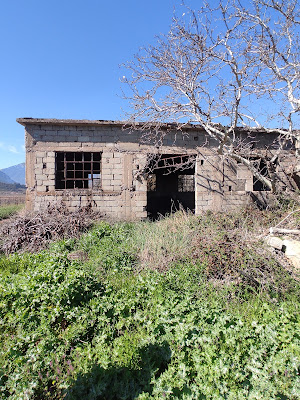
Old abandoned shed: a herpers paradise
After this short stop, we drove up the mountains, and a few minutes later we were at Stymfalia basin. The are is rich in herpetofauna, it wasn't long until we found a striking green Ionian Wall Lizard (Podarcis ionicus) under an old tent lying on the ground. Some amphibians we found around the nearby small stream were European Tree Frog (Hyla arborea), Balkan Frog (Pelophylax kurtmuelleri) and European Pond Turtle (Emys orbicularis)
Ionian Wall Lizard (Podarcis ionicus)
Looking for amphibians in a small stream
It was time for lunch, so we enjoyed a traditional mixed grilled menu, followed by home made sweet pumpin pie. With more energy, we continued herping at the fields surrounding Lake Stymfalia. The most abundant reptile species was the Peloponnese Slow Worm (Anguis cephallonicus), found in several places. A reptile of stunning beauty, with its dinstictive clearly defined dorsolateral lines with wany edges on the neck. Juveniles have striking gold backs and strong contrast with the rest of the body.
Golden coloured and super active: a juvenile
Peloponnese Slow Worm
Peloponnese Slow Worm
with dinstincive wany edges on the neck
Peloponnese Slow Worm (Anguis cephallonicus) ENDEMIC SPECIES
Kotschyi's Gecko (Cyrtopodion kotschyi)
Eastern Peloponnese Wall Lizard (Podarcis thais) (P) ENDEMIC SPECIES
Ionian Wall Lizard (Podarcis ionicus)
European Snake-eyed Skink (Ablepharus kitaibelli)
Spyros Skareas
Bird Guide and Certified Tour Leader
Athens, GREECE

